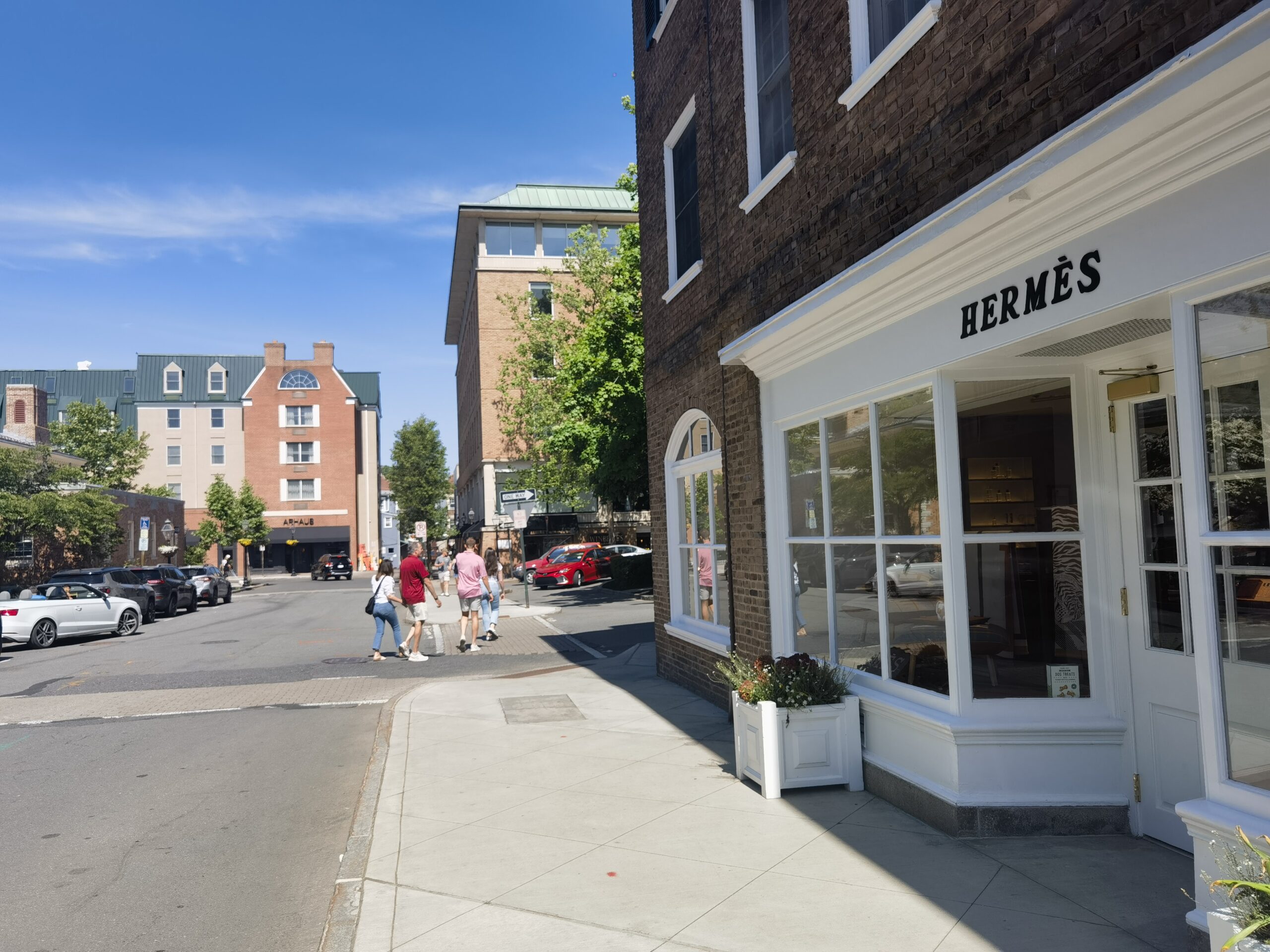Top international universities are becoming Hermès’ latest destination.
In April this year, French luxury brand Hermès opened its 41st store in the United States, near Princeton University in New Jersey. Hermès has thus become the first European mainstream luxury brand to open a store in an Ivy League university location in the U.S.
Luxeplace.com recently visited this boutique to explore how Hermès maintains its essence while seamlessly integrating into this academically rich and relaxed beautiful town.

The First European Luxury Brand in Princeton
This boutique is located in a charming red-brick building on Palmer Square, right at the entrance of Princeton University. The arched windows along the street provide ample natural light for the store interior.
Hermès is the first top European luxury brand to enter Palmer Square, with neighboring stores being North American brands such as Ralph Lauren, Lululemon, and Warby Parker.
The previous tenant of this location was the American women’s brand Ann Taylor. After Ann Taylor closed in 2021, Hermès signed a lease for the property at 17 Palmer Square.

Quiet and understated are the strongest impressions of this street. Although not extremely crowded, it attracts a high-income local crowd. Princeton is one of the wealthiest towns in the U.S., with a median household income of $176,695 in 2022, more than twice the national average.
The tranquil natural environment, high-quality academic resources, and rich cultural atmosphere make Princeton a favored residence for America’s upper class. The presence of Princeton University and the Institute for Advanced Study enhances the allure of “Princeton” as a dream destination.

This is Hermès’ third store in New Jersey, with the other two located in Short Hills Mall and American Dream Mall.
A New Example of Hermès’ Localization Strategy
Like other Hermès boutiques worldwide, the Princeton University store was designed by Parisian architecture firm RDAI. The design reflects a blend with local culture, presenting a unique academic touch.
For instance, the store’s main colors of deep blue-green and autumn red echo Princeton University’s elegant scenery. The carpets, woven in graphic and striped color combinations, evoke a library atmosphere, resembling stacks of books. Equestrian-themed furniture and artworks add a cozy touch.

Occupying 6,155 square feet (approximately 570 square meters) on the ground floor of the red-brick building, the store’s fluid layout creates a welcoming and warm environment.
The main entrance showcases women’s and men’s silk scarves, perfumes, beauty products, and fashion jewelry. Different sections transition into areas for equestrian products, home goods, leather goods, and men’s and women’s ready-to-wear. The deep green passages connect the store like chapters of a story.

Another detail is the ample seating provided for guests to rest. The store also has a private salon for customer interactions, fostering a serene and peaceful ambiance from location and design to human interaction.

Although the U.S. luxury market growth is slowing, Hermès CEO Axel Dumas emphasized that the brand’s appeal in the U.S. remains strong, calling it a market full of opportunities.
Hermès has maintained double-digit growth in the Americas for several quarters, with the U.S. market performing particularly well. In the first quarter of 2024, the Americas market continued to grow, with a 12% year-on-year increase, driven by the U.S.
Hermès attributes its brand resilience to a “localization strategy.” Axel Dumas noted in the third quarter of 2023 that the brand’s main growth source is local customers in each market.
Loyal local customers form the foundation of Hermès’ business. From this perspective, opening a store in Princeton aligns with Hermès’ localization strategy. Although Hermès already has two stores in New Jersey, Central Jersey was still a blank spot. The new Princeton University store undoubtedly helps Hermès strengthen its connection with local high-end consumers.
Additionally, the Princeton University store not only serves the local high-income crowd but also attracts elite students from around the world, an important current and future customer base for Hermès.
Targeting such prestigious universities, which are “luxury brands” in themselves, might be a new opportunity for international luxury brands in the “new normal.”

| Image Credit: Luxe.CO on-site photography
| Editor: LeZhi



